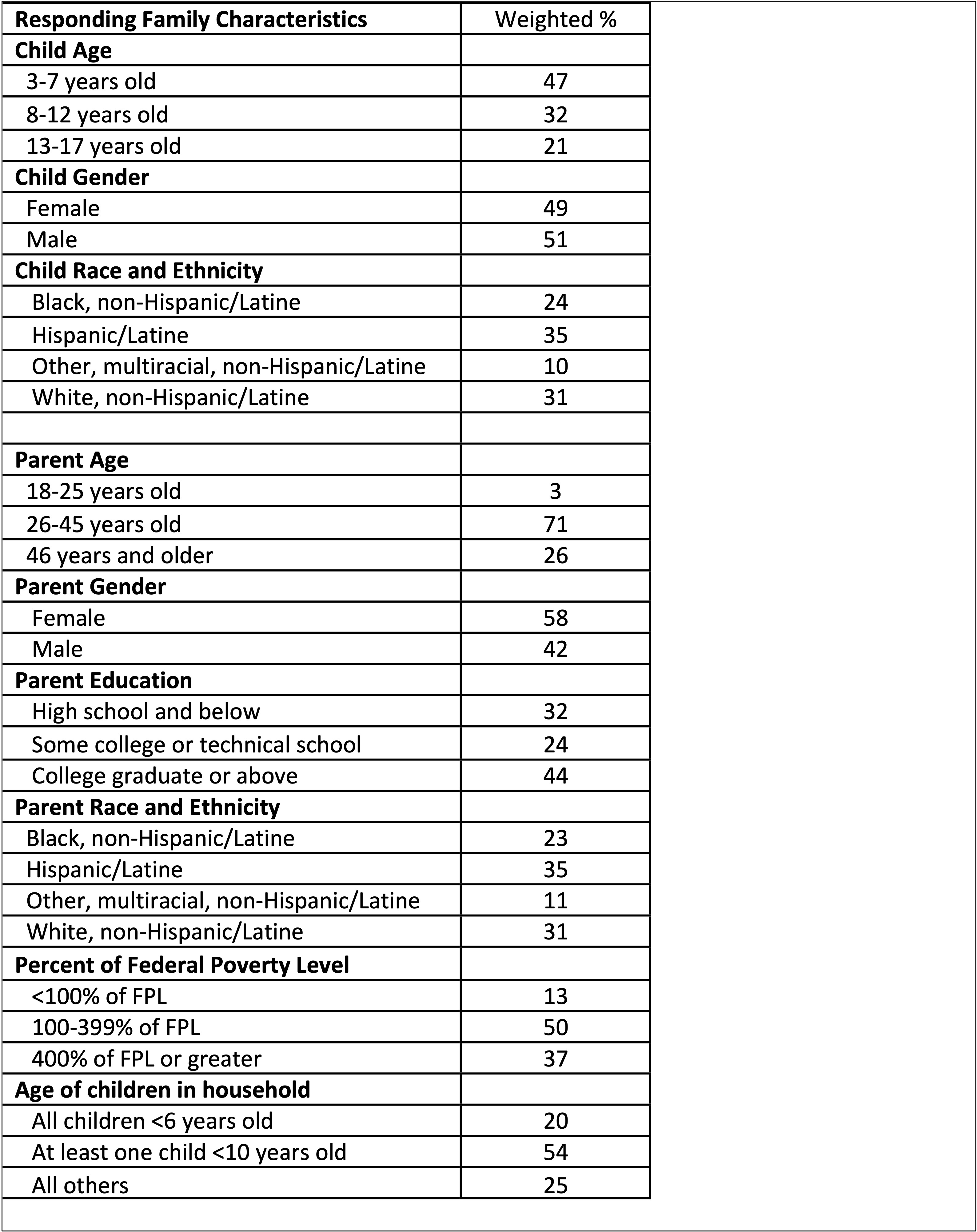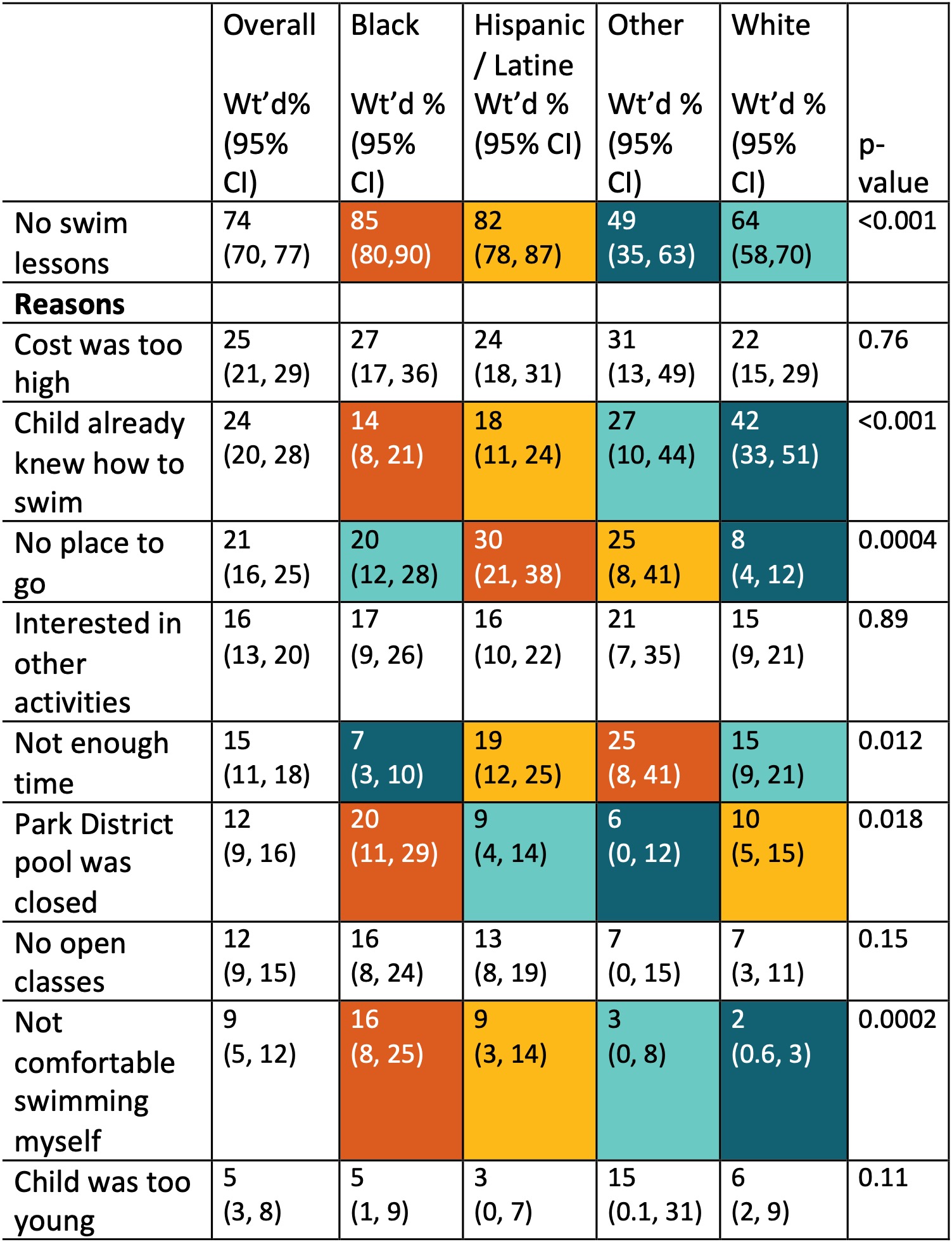Health Equity/Social Determinants of Health
Session: Health Equity/Social Determinants of Health 3
458 - An Ebb in Prior Year Swim Lessons Among Children 3 through 17 years in Chicago as the COVID-19 Pandemic Subsided
Friday, May 3, 2024
5:15 PM - 7:15 PM ET
Poster Number: 458
Publication Number: 458.582
Publication Number: 458.582

Michelle Macy, MD, MS (she/her/hers)
Associate Professor
Ann & Robert H. Lurie Children's Hospital of Chicago
Chicago, Illinois, United States
Presenting Author(s)
Background: Racial and economic segregation limited opportunities for minoritized groups to learn to swim throughout the past century and likely contribute to disparities in drowning rates among youth. In a 2020/2021 Chicago survey, roughly 55% of Black and Latine parents reported no children in their family had taken swimming lessons compared with 28% of White parents. Little is known about the lasting impact of COVID-19 pool closures and lifeguard shortages on swimming lesson participation.
Objective: To compare parent-reported swimming lesson participation in a diverse sample of Chicago children by age, gender, and race and ethnicity.
Design/Methods: Data were collected from Oct-Nov 22 through the Voices of Child Health in Chicago Parent Panel Survey, in English and Spanish via web and phone to parents from all 77 Chicago neighborhoods. We asked parents if any of their children 3 to 17 years old had taken swim lessons in the past year. If the parent indicated their child(ren) had not taken swimming lessons, they selected from a list of 10 reasons why. Parents reported race, ethnicity, and other demographic characteristics. Descriptive and chi-square statistics were survey-weighted to be representative of Chicago’s population.
Results: Responses were received from 1140 parents in households with child(ren) < 18 and 1042 parents of 3 to 17 year olds were included in analyses. Family characteristics are presented in Table 1. Nearly three quarters of children had no swim lessons in the past year (74%) with significant racial and ethnic differences: 85% among Black, non-Hispanic/Latine parents; 82% among Hispanic/Latine parents; 49% among other, multiracial, non-Hispanic/Latine parents; and 64% among White, non-Hispanic/Latine parents (p < 0.001). Reasons parents selected for their children not taking swimming lessons are ranked from most common to least common in Table 2. Statistically significant differences (p < 0.05) were noted by race and ethnicity for the following reasons: child already knew how to swim, no place to go, not enough time, Park District pool closure, and parent not comfortable with swimming themselves.
Conclusion(s): As Chicago families emerged from the COVID-19 pandemic, participation in swimming lessons was limited and racial and ethnic disparities persisted. Interventions to promote equitable access to affordable swimming lessons are even more important as children missed opportunities to learn to swim while pools were closed due to the pandemic and subsequent lifeguard shortages.


